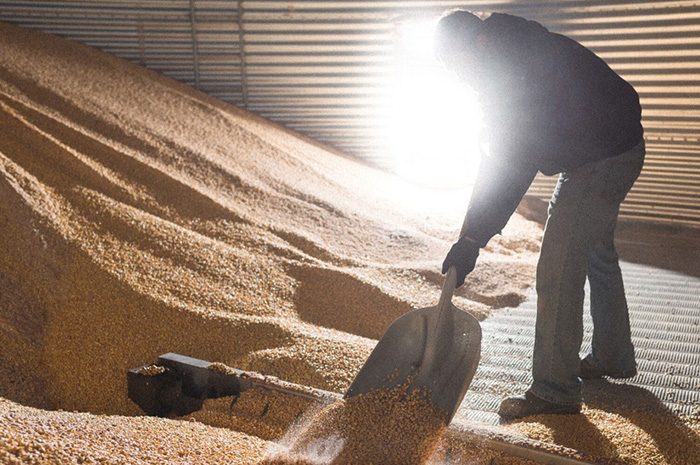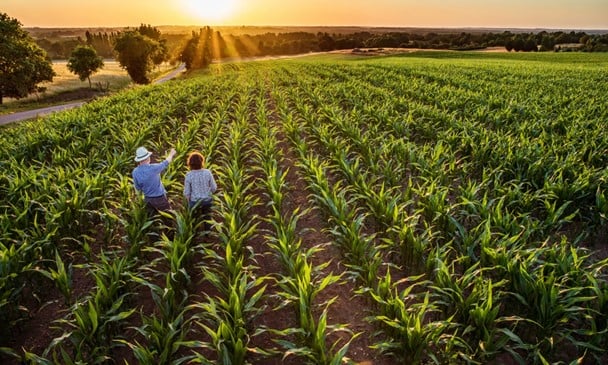For many, a journey paved with 80-hour work weeks, herd challenges, and a barn collapse may cause them to turn the other way. For Scott Herber, this journey has been rewarding and fulfilling, with his dedication and perseverance displaying the importance of loving what you do and working hard with a tight-knit team.
Drive through southern Minnesota, and without a doubt you’ll see all sorts of natural beauty, towns small and large, and farms of all kinds. Drive into Altura, and you’ll find a dairy farm that stands as a testament to hard work, dedication, and the spirit of its owner, Scott Herber. This farm, known as Shadycrest Holsteins, which started small and evolved over the years, now operates on a larger scale, thanks to the relentless efforts and vision of Scott, his family, and a dedicated team.
Building a dream
Herber's journey into farming began in his youth. Born into a multigenerational farming family, he grew up on a home farm, where his grandparents tended the crops and livestock. Scott and his brother both invested in their family farm, but eventually, Scott took over a new piece of land in 1990, while his brother stayed on the home farm. In 1993, Scott gained full ownership, determined to turn his dream into reality.
Herber's vision was clear: he wanted to build a facility where he could milk cows for the rest of his life. Starting with just 50 cows and one tractor, and employing only one part-time high school employee, Herber faced the daunting task of building his farm from the ground up. The early days were grueling; he worked 15-18 hour days with only one day off every other week. "When you look at what I've got today in 40 plus years, I've acquired some things, but it didn't come easy," Herber reflects.
Despite numerous challenges, including a snowstorm that collapsed his barn, Herber persevered. Through slow and conservative expansion, he gradually increased the herd to 650 cows. Each setback on this path was met with determination and a forward-looking mindset. "I'm always looking to the future – to get where I am today, I was always looking 2-5 years down the road toward what we needed to do to get there," Herber says.
The importance of a committed team
Herber's success story is not just about individual perseverance; it's also about the power of teamwork. Today, the farm operates smoothly thanks to the combined efforts of Scott, his wife Michelle, their son Ross, herdsmen Ray and Tricia, and many more dedicated employees. "It takes a good team to make this operation work," Herber emphasizes.
His son, Ross, who recently graduated from South Dakota State University, has been increasingly involved in the farm's operations, preparing to take on more responsibility as Scott plans to gradually step back.
Michelle, working behind the scenes, plays a crucial role in managing the farm's administrative tasks, ensuring that everything runs like a well-oiled machine. Promoting from within while maintaining a happy and committed management team has been one of the ongoing challenges, but it's one that they navigate with care and consideration.
Facing and overcoming challenges
A pivotal moment in the farm's history came in 2019 when a heavy snowstorm caused the roof of their barn to collapse. Luckily, no one was injured, and the quick-thinking and diligence of the team helped them to save most of the cattle. The aftermath involved a year-long process with the insurance company, but in the end, the farm emerged stronger.
"What I've learned is that it takes a lot of loyalty and commitment to get through these challenges," Herber says. “Farming is not a typical 9-5 job; you have to enjoy the work that you’re doing.”
Embracing technology and innovation
A key factor in the farm's success has been its ability to embrace new technologies and innovations. The farm’s main barn, featuring innovative tunnel ventilation, ensures a steady stream of fresh air, which is crucial for the cows' health and productivity. On a good day, a cow can produce about 105 pounds of milk, a little over 12 gallons, but this is highly sensitive to dietary and environmental conditions.
Genetics have also played a major role in the farm’s success. This herd excellence has allowed them to stand apart from other dairy farms, evidence by the fact that their farm has sold cattle at the World Dairy Expo, and to buyers in Japan, the Netherlands, and to U.S. bull studs. At one time, the ‘Shadycrest’ prefix was one of the highest-ranking cows in Europe.
The process after milking is technical, and as such, meticulously managed. The milk is cooled with an in-line cooling system, which uses a plate cooler and cold water to transfer the heat from the milk to the water, resulting in cool milk being sent through to a tank that finalizes the cooling process. Afterwards, the milk is then taken to Ellsworth Creamery, where it is pasteurized and made into cheese curds. Their high-quality milk, indicated by a low somatic cell count and high protein and fat, is essential for producing superior cheese curds.
Sustainability and efficiency
Herber’s farm is a model of efficiency and sustainability. The farm raises a significant portion of the forage needed to feed the cows, including alfalfa and corn, with planting and harvesting done in-house. The high starch content in their corn contributes to the cows' health and productivity.
Manure is managed and used as fertilizer, creating a cyclical system that benefits both the farm and the environment. Water used for both the cooling process of the milk and for the cooling of cows can be reused, along with sand bedding, which is used to keep the cows comfortable, is recycled.
Looking to the future
As Scott looks to the future, he is confident about the next generation taking the lead. His son Ross is learning the ropes and bringing fresh ideas and perspectives to the table. The future of dairy farming faces challenges, including competition from milk alternatives and misconceptions on social media. However, Herber believes in the potential of innovations like A2A2 milk, a type of milk that is more easily digestible for most people, which could reshape the industry.
Education is also crucial for the future of dairy. Schools play an important role in shaping children's habits and ensuring that school milk is served at the right temperature which can influence future milk consumption.
Herber’s story is one of resilience, commitment, and continuous learning. His farm stands as a model of success, built on a foundation of hard work, innovation, and a dedicated team. As he prepares to pass the torch to the next generation, his legacy will continue to inspire and guide the future of dairy farming.


